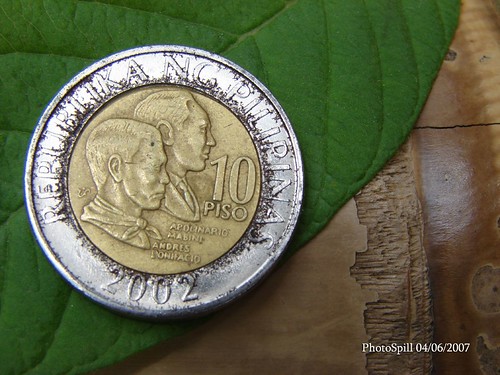 photo from photospill.com
photo from photospill.comThe Central Bank never thought someone would actually bother counterfeiting 10 peso coins. To their big surprise, some syndicates did take up the challenge and minted fake 5 and 10 peso coins. In one raid, they even seized 5 million pesos worth of 10 peso coins.
A few clues on how to spot these fake coins:
Take note that only 10 and 5 peso have been counterfeited so far. Some 1 peso and 25 centavo coins stick to magnets, but this is because the Bangko Sentral changed their composition to prevent their smuggling. That's another topic.
A few clues on how to spot these fake coins:
- The fake coins are dated either 2001 or 2002. Be more careful with coins bearing these dates.
- Fake coins stick to magnets. While the genuine coins are made up of an alloy of aluminum, copper, nickel, and zinc, the counterfeit ones are made of steel.
- The fake coins tend to rust, real ones don't. This is because of their metal composition. The image above shows rust on the outer ring.
- The fake coins are lighter. Again, this is because they are made of a different metal.
- Fake coins are not well minted. Upon closer examination, the fake coins miss out some details. Click on the image above and you will see the "B" in "Bonifacio" to be distorted. The other letters are also indistinct. The edge of the inner metal (yellow) is also uneven.
Take note that only 10 and 5 peso have been counterfeited so far. Some 1 peso and 25 centavo coins stick to magnets, but this is because the Bangko Sentral changed their composition to prevent their smuggling. That's another topic.










